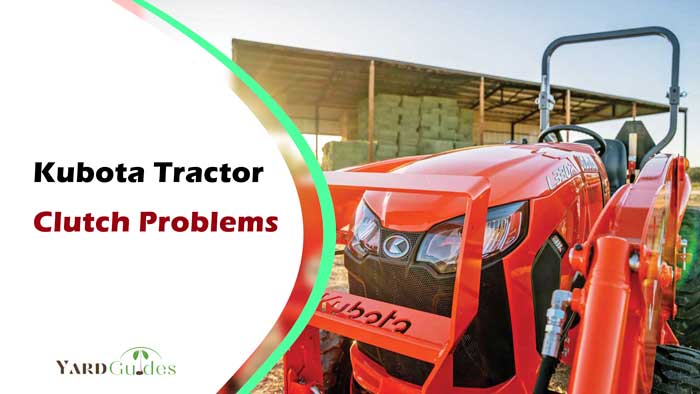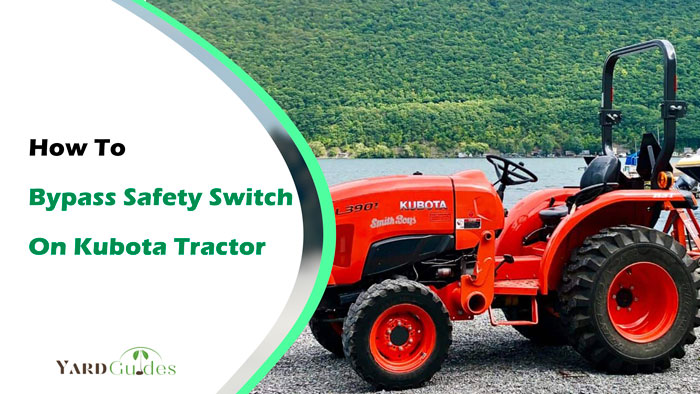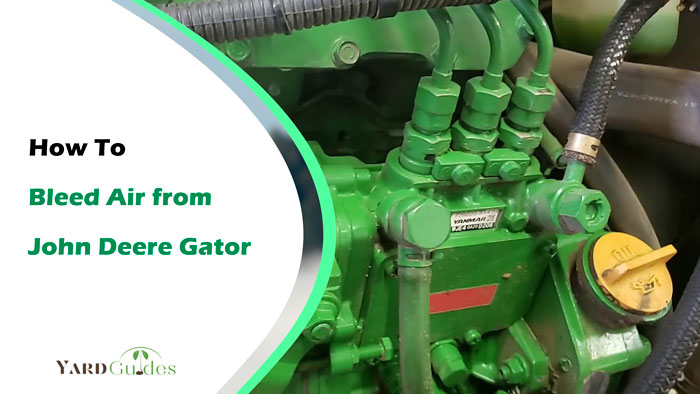A bad clutch would only result in bad power transmission. You should check out if you have these problems with your Kubota tractor. This is one of the most important components of any automated machine. It needs to be fixed immediately.
So what are the Kubota tractor clutch problems? The most common problems are adhesive, firm, and noisy clutches. Similarly, you will also come across problems like the clutch traveling long distances before engaging and the engine revving higher than ever.
Well, don’t worry if you could spot your tractor’s problem right away. We will cover the solutions to each problem in the easiest way possible. Stay with us and keep reading.
Table: Problems And Quick Fixes
Before getting in-depth, let’s have a look at a table that will help you get a general idea of what the fixes look like.
| Problems | Fix |
| Adhesive Clutch | Tighten the clutch cables if stretched. If broken, replacement is required |
| Noisy Clutch | Greasing the clutch pedal spring and pivot point |
| Firm Clutch | Lubricate clutch cable with synthetic oil |
| Mistimed Clutch Engage | Pressure plate and friction disc need to be replaced |
| High Engine Revving | Best to show it to a mechanic |
In Depth: Kubota Tractor Clutch Problems And Solutions
At first, we will look into the problem deeply so that you can identify whether the problem is exactly what you are facing or not. Later on, we will cover the solution so that you can fix those easily. So without any further ado, let’s get started.
1. Adhesive Clutch
You know it’s an adhesive clutch when the clutch doesn’t come back to its original position in the expected time. Rather, it takes more time to get back to its original position, which is a very bad sign. Thus, you won’t have full control over your tractor with it and it increases the chances of accidents.
Additionally, you won’t be able to shift gears as smoothly as before. Overall, you will just know when there’s an adhesive clutch present in your tractor.
The Fix
The primary reason for an adhesive clutch is a broken or stretched clutch cable. With a manual transmission, a clutch fork is situated on the bell housing, and clutch cables are connected at the top of the clutch pedal.
You need to have a look at the clutch cables and if found stretched, they can be repaired. All you have to do is tighten the cables from the bell housing. If you don’t have any prior knowledge, it’s best to take it to a mechanic.
On the other hand, a broken one cannot be repaired but rather get replaced.
3. Noisy Clutch
When you press the pedal and hear a high-pitched squeaking, you know your clutch isn’t working properly. This kind of noise is frequently related to issues with the throw-out bearings or clutch release.
Nevertheless, as long as it makes small squeaky sounds, a little bit of cleaning should do the work. Whereas, if it’s making sounds that it shouldn’t be making and is not usual, there’s something very wrong that needs to be fixed.
The Fix
If it’s making squeaky noises, the clutch pedal spring and pivot point can be greased to stop squeaking. Contrarily, there’s no easy fix you can do for a clutch that is making unusual noises. You have to take out the clutch and show a mechanic the problem. A replacement might be required.
3. Firm Clutch
This problem is quite self-explanatory. The clutch should require some pressure to move, and you should encounter some resistance when applying pressure. We are not talking about this slow resistive force.
Rather, you will have a quite firm clutch. As a result, you will have a hard time pressing the clutch down.
The Fix
You should check your entire clutch cable first. They could need to be lubricated with a particular oil or powder because they may have become worn out over time.
We prefer synthetic oil for this process. You must also reset the cable and adjust it to your preference after lubricating it.
4. Mistimed Clutch Engage
The clutch is intended to engage and disengage the link between the gearbox input shaft and the engine flywheel. When the clutch pedal is pressed, the clutch disengages; when the pedal is released, the clutch engages. The clutch is controlled within the tractor.
Yet, there’s a possibility with your Kubota tractor that the clutch engages after traveling a long distance. Similarly, also engages right after it’s touched. Both of them are not good.
The Fix
One of two things could be the cause of a clutch that doesn’t engage properly. It typically denotes that the pressure plate has lost all tension or that the friction disc is worn out.
Whatever the problem might be, both of their solutions are replacements.
5. High Engine Revving
If you come across your Kubota engine revving higher than ever when the clutch is fully engaged, you have come to the right section. The engine will rev higher due to a sliding clutch as the transmission strains to shift properly.
Additionally, the clutch pedal will require significantly less push to engage if your clutch is slipping. Your car will lose power and struggle to maintain speed as a result of a slipping clutch.
The Fix
There’s no point in risking fixing a slipping clutch. It’s best if you show a mechanic for this problem. It needs to be fixed immediately.
The flywheel and pressure plate, among other parts in your Kubota tractor, could sustain additional harm from excessive heat. Moreover, clutch sliding might result in risky driving situations. It may prevent you from smoothly changing gears and perhaps cause the vehicle to stall.
Conclusion
To conclude, these are the most occurring clutch problems. Whether it be a squeaky clutch, a firm one, or even an adhesive one, you should fix them as soon as you can.
On the other hand, the high revving and the clutch engage problem should be fixed immediately as they are quite a hassle. Additionally, riding your Kubota tractor would get very traumatizing. Lastly, if you have very low prior knowledge of tractors, it’s best to go to a mechanic.



